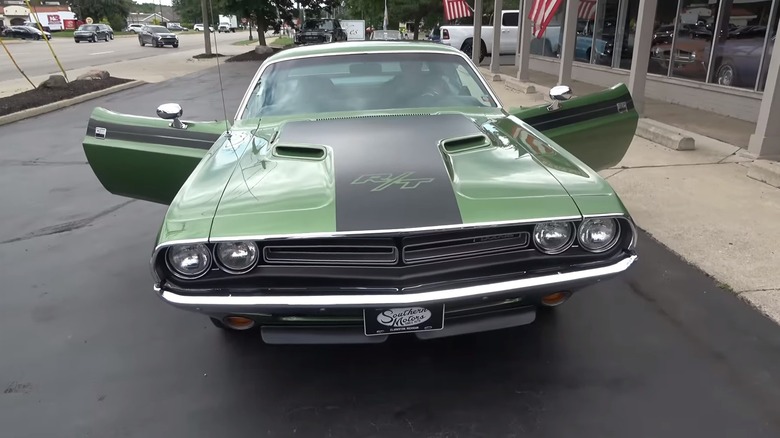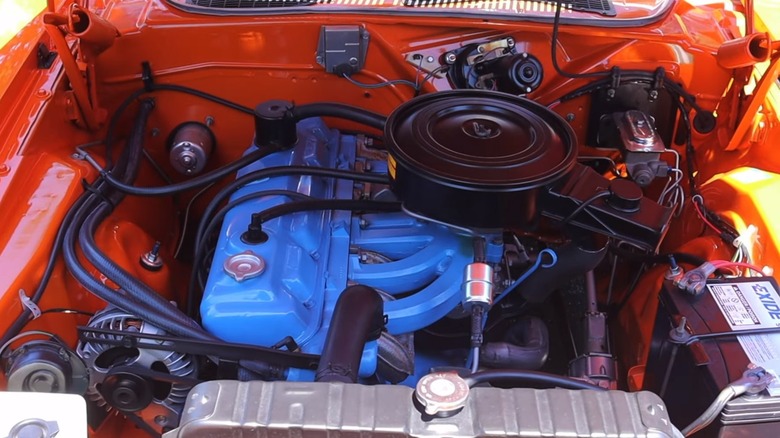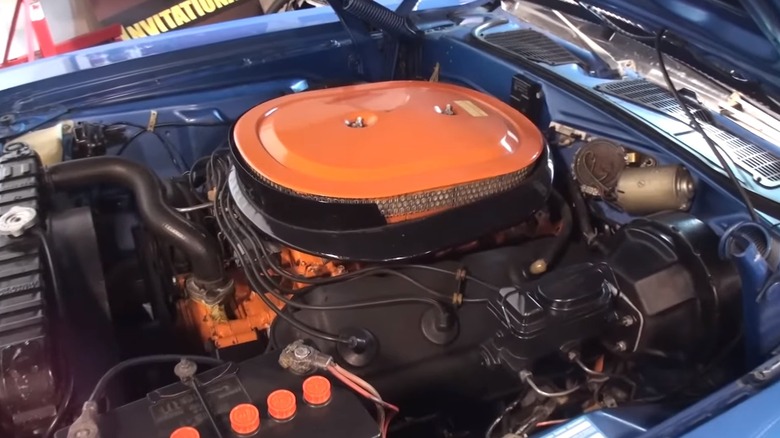All About The Engines That Powered The 1971 Dodge Challenger
The mid-60s to early '70s brought about one of the most revered and celebrated chapters of automotive history, the muscle car era. During this time, Detroit was continually churning out high-output big block V8 engines that offered drivers thrilling stock performance. With advances in the expansion of American roadways and inexpensive fuel, young people were especially attracted to these powerful machines. The Pontiac GTO, Chevy Camaro, Pontiac Firebird, and Dodge Challenger were just some of the timeless classics introduced during the muscle car heyday.
The 1971 Dodge Challenger emerged at a time when the automotive landscape began to change due to stricter emission standards, and insurance rate increases. All told, there were 27,377 1971 Challengers made, with only 167 featuring the 383 Magnum engine and even fewer offered the HEMI. Fans of the Challenger noticed some engine compression reduction in specific models of the '71, and it would signal the nearing end of the muscle car era with the 1973 oil crisis on the horizon. Several engines were available for the '71 Dodge Challenger: two 6-cylinders, four small-block V8s, and two big-block V8s. The automaker offered buyers a range of performance from as little as 125 horsepower with the 198ci 6-cylinder to 425 horsepower from the monstrous 426ci HEMI. It wasn't just the Challenger that benefitted from the 426; the 1971 Plymouth HEMI Cuda was also exceedingly fast.
Inline-six and small block V8
The base 1971 Dodge Challenger came equipped with a 198ci inline-six engine with a single barrel carburetor, an 8.4:1 compression ratio, and a single exhaust. This smaller engine could produce 125 horsepower, which was more fuel efficient but lacked the potent capability the muscle genre was known for. Slightly larger, the 225ci inline-six bumped up the horsepower to 145 but still offered meager performance compared to other options. Basically, if you went with one of these inline-six versions of the Challenger, you had the look but not much under the hood to back it up.
There were also four small-block V8 engine options, which considerably enhanced Challenger's power, but some noted a disappointing change from prior models. To conform to stricter emission requirements, Dodge began reducing the compression ratio of some of their engines, much to fans' dismay. In fact, the 383ci Magnum V8 available in the R/T model saw around a 30 horsepower reduction in 1971. There was a 318ci, 340ci, and 383ci V8 option that went from 230 horsepower to 300. The 340ci and the 383ci Magnum featured a 4-barrel carburetor and dual exhaust, with the 340ci featuring a 10.3:1 compression ratio.
Big-block V8
Those who wanted the Challenger look and the ability to blow the doors off the competition needed the big-block V8 variants. The 440ci V8 featured a bore and stroke of 4.32 x 3.75, a 3-barrel carburetor, a compression ratio of 10.3:1, and dual exhaust. Being the smaller of the two big-block V8s, this engine still rachets up the horsepower to 385.
The most capable option under the hood of the 1971 Dodge Challenger family was, hands down, the 426ci HEMI V8. This HEMI was one of the few engines that refused to compromise and never saw a reduction in compression like some of the other options did at the time. The 426 HEMI came equipped with a 4-barrel carburetor, a 10.2:1 compression ratio, and dual exhaust, producing an impressive 425 horsepower stock.
Today, the tradition continues. While the automaker made some fantastic muscle cars back in the day, you'd be surprised just how fast the newer Dodge Challenger SRT Hellcat really is.


